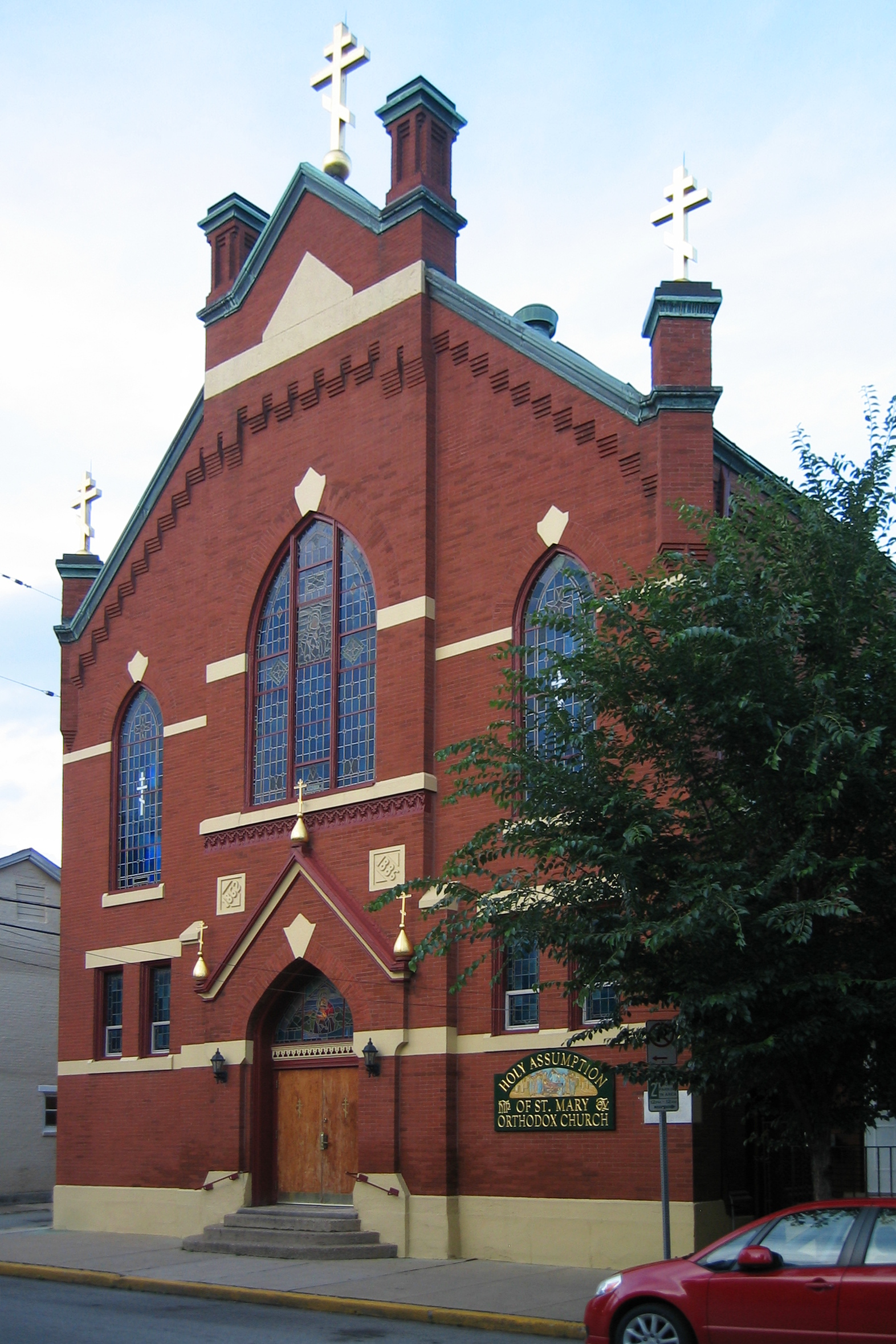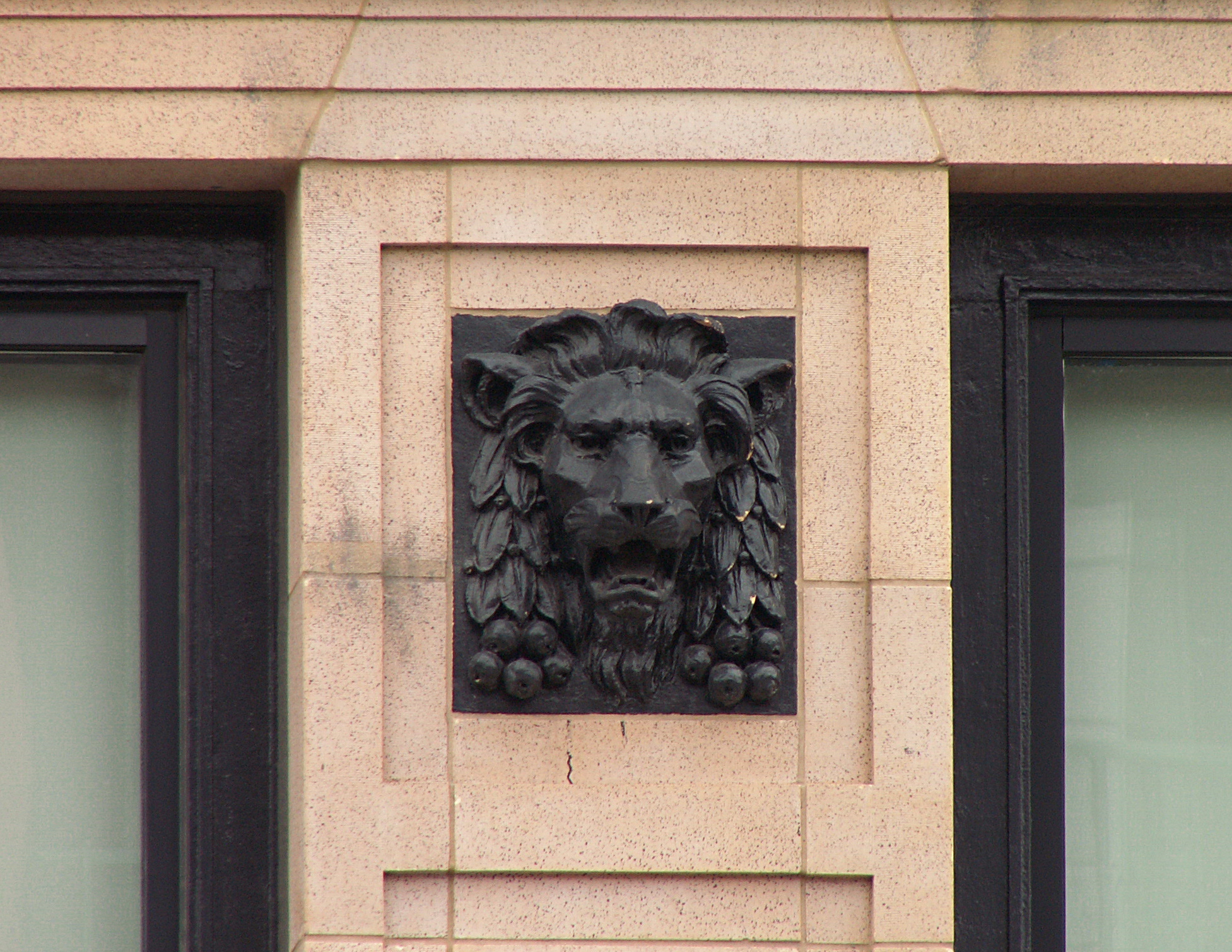
Another branch library by Andrew Carnegie’s favorite architectural firm, Alden & Harlow, who also gave us (as Longfellow, Alden & Harlow) the main Carnegie Institute building in Oakland.

Another branch library by Andrew Carnegie’s favorite architectural firm, Alden & Harlow, who also gave us (as Longfellow, Alden & Harlow) the main Carnegie Institute building in Oakland.

Solof’s was a furniture dealer, and there is nothing particularly impressive about this building except that the exterior has hardly changed at all since the building was new. It gives us a very good picture of the commercial South Side of the early twentieth century.
Addendum: The architect was W. A. Thomas; the building was constructed in about 1917.
Camera: Canon PowerShot A590 (hacked). The picture below is a fairly large composite.


Update: For the history of the church, see “The Mystery of the Converted Church on the South Side.”
Father Pitt knows nothing of the history of this building at 23rd Street and Larkins Way other than what is written in the bricks. It appears to be an old church, probably dating from the earliest development of East Birmingham, that was later converted into four tiny houses facing Larkins Way. To judge by the style, the conversion is not recent. And that is about as much as Father Pitt can read in the bricks, so any more information or corrections would be much appreciated.

Update: The building has been adapted as artists’ lofts and studios as “the Brew House.” The original text of the article follows.
The Duquesne Brewing Company produced what used to be Pittsburgh’s favorite beer. This old building has had a hard life since the brewery closed; it was taken over by artist squatters for a while, who probably kept it from falling to pieces, but the city has no tolerance for poor squatters who claim buildings that could be redeveloped by rich people. The various attempts at redevelopment seem to get only so far, however. Right now it seems to be in the middle of one of those attempts, and for the building’s sake we may hope that this one succeeds.


No matter how trendy the neighborhood gets, the alleys in the South Side never seem to change: they’re still impossibly narrow and filled with tiny houses in a riot of textures. Above: Larkins Way. Below: Carey Way.


This building has a curious history, only part of which is revealed by the capsule history on the congregation’s Web site:
“In 1917, SS. Peter and Paul Russian Orthodox Church was established in this building. In the early 1930’s due to economic realities, the faithful of SS. Peter and Paul lost their building, and were forced to move. In January of 1943, the present Church structure and parish home were regained by the faithful of SS. Peter and Paul Russian Orthodox Church and in keeping with tradition, the Church was renamed in honor of the Theotokos.”
This paragraph leaves out the origin of the building, which (according to the two date stones) was put in its present form in 1886; the date 1862 is either the date of the foundation of the former congregation or the date when the church was originally built, with a large expansion in 1886. The architecture is clearly American Protestant. “Economic realities” almost certainly means “running out of money.” But “in keeping with tradition” is not well explained: it suggests a Russian tradition that dictates that, when you buy a building from a Protestant church that’s moving out, and then lose it to an economic depression, and then win it back again in a poker game or something, you ditch the saints you came in with and rename it for St. Mary. An Orthodox reader may be able to explain the tradition better to Father Pitt.
At any rate, the church has been Holy Assumption for more than seventy years now, and it is one of the few really successful congregations on the South Side Flats—where others are losing members, this one seems to be growing and thriving.


Another picture of this building, this time a composite made from four separate photographs. There is no reason not to repeat what Father Pitt wrote the last time he mentioned the Schiller Glocke Gesang und Turn Verein:
On the whole, the South Side Flats were East European and the Slopes were German. But a large neighborhood like the Flats has room for diverse microneighborhoods, and we find this “Schiller’s Bell Singing and Athletic Society” on Jane Street. The building is now turned to other uses, but the inscription remains. Pittsburgh and Allegheny used to be full of German singing societies; the Teutonia Männerchor in Dutchtown is the most prominent remnant.

This was a store where you could buy everything, from groceries to clothes to furniture. It was most definitely not the company store for the J&L steel mill nearby, because of course such company stores were illegal in Pennsylvania. Coincidentally, however, the corporation’s list of directors was exactly the same as the list of directors of the Jones and Laughlin Steel Company, and the store accepted the scrip in which the workers were paid, which could be used nowhere else.

The building was as magnificent as some of the downtown department stores; and, after serving as the local headquarters of Goodwill Industries for three and a half decades, it is now beautifully restored as very expensive luxury apartments under the name “The Brix at 26.”


